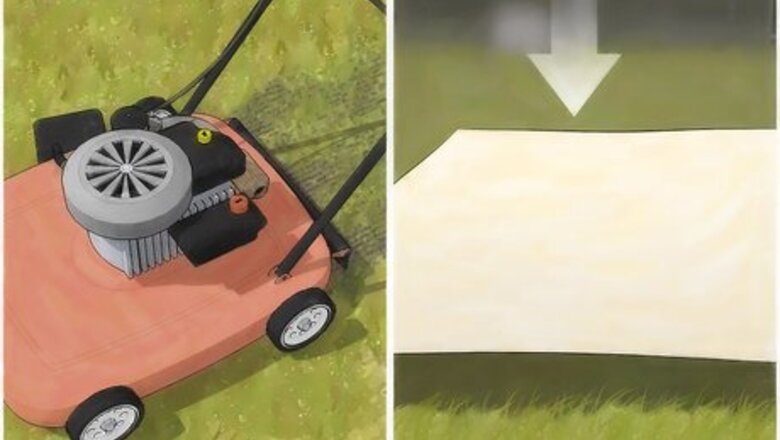
views
Removing Your Old Lawn
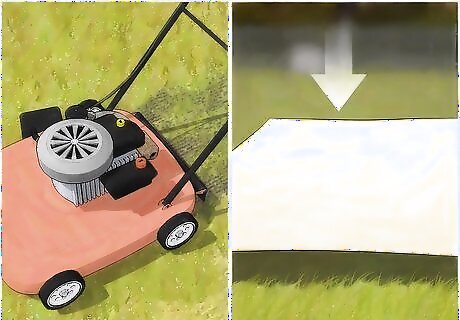
Smother your lawn. Smothering your lawn will block light and prevent photosynthesis, killing the grass and weeds. The smothering method is not as dependent upon the weather as solarization or herbicides. Mow the grass closely. Cover it with layers of cardboard or newspaper (use black ink; colored ink could contain metals). Wet the covering and top it off with grass clippings (4 inches / 10 cm or more), compost, 6-inch (15cm) wood chips, or another organic mulch. Black plastic also works. It will block the sun and prevent photosynthesis. Avoid heavy mulching in shady areas,which prevents the soil from warming up, causing too much moisture in the root zone. The layers of your old lawn will break down, making compost. The soil is now ready for planting.
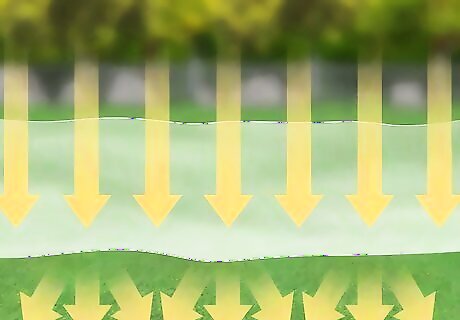
Use solarization to remove your old lawn. Solarization uses the sun’s heat to kill the old grass by cooking it. Weeds, seeds and pathogens are also removed.You’ll need to cover the entire lawn with clear plastic Keep the lawn covered for about 7 weeks. Cloudy days slow things down. The hottest days with direct sunlight are optimal for solarization. Remove the plastic when the grass has died. The dead grass can also be removed, or you can leave it as compost. Clear plastic is preferable to opaque because more sunlight can get to the grass surface. Thick plastic will last longer because it’s sturdier and resists tears.
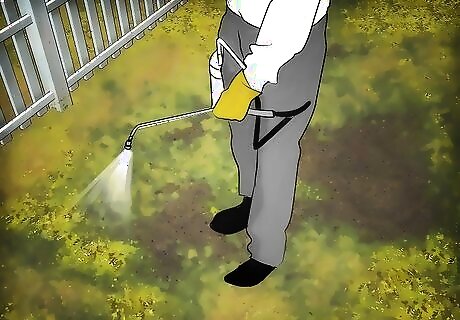
Remove the old lawn using herbicides. Herbicides will kill weeds, roots and grass. Read the full label before you begin and be sure to follow all safety instructions, including the use of personal protective gear. Mix the herbicide in accordance with the directions on the product, then apply it over the entire lawn, taking care to avoid nearby garden plants. Select a herbicide that will degrade quickly. This will minimize how long it stays in the environment. Herbicides containing glyphosate are a wise choice. Add just a few drops of dishwashing liquid soap or another surfactant to help the herbicide stick to vegetation. Apply the herbicide on a sunny day (60 degrees or above) so that the herbicide will dry quickly. Choose a day with little to no wind to avoid drifting. Reapply the herbicide if the turf has not completely died. Wait about four weeks before reapplying. Wait one week after the final application. Till the dead turf into your soil.
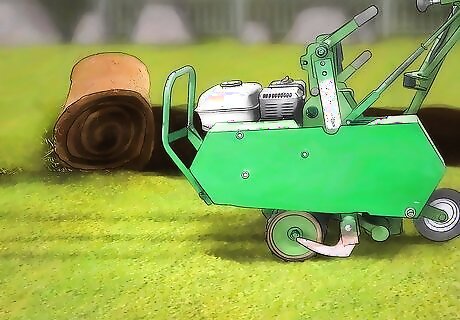
Remove the sod. Sod removal works best for grass that doesn't have long roots. Grasses that are perennial, Bermuda grass and perennial rye, for instance, have roots that go down several feet. It’s hard to get all of it by cutting away the sod. Kill the vegetation using one of the methods above first to make sod removal easier. Rent a sod cutter if you don’t have one. They're about $70.00 per day. Alternately, you can use a flat shovel rather than a sod cutter. It’s less expensive, but it’s a lot more labor. Cut the sod into strips. After cutting the sod, roll up the strips and dispose of them. Alternately, you can leave the sod in place by inverting it and using it for compost. Cover the inverted sod in 6 to 10 layers of newspaper. The decomposed sod improves the soil and prevents grass from regrowing. Do not leave the sod in place if it contains undesirable weeds or invasive grasses. You can also use the inverted sod to make high places on your lawn or to fill in low places.
Starting Your New Lawn Using Seeds
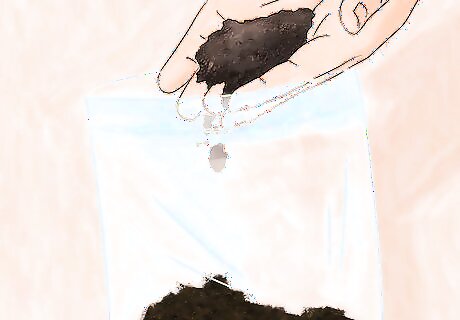
Test your soil. Use a soil test to determine the best way to treat your soil. Cooperative Extension Services or soil testing laboratories can analyze your soil. You can find them through a local state university. A commercial testing kit can also be used to test your soil. Take multiple samples from different locations around the lawn and at different depths of the soil, near the surface and 8 to 10 inches (20–25cm) or more in depth. Label each one clearly.
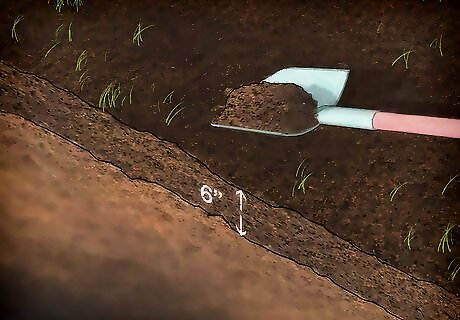
Grade the soil for your new lawn. Do this once the old lawn has been removed by your selected process. This is a nice opportunity to fix existing grade problems: The ground should slope away from your house in all directions. It should drop about 2 ½ inches every 10 feet (3 m). Use a landscaping rake if the grading adjustments are minor. Water the area and fill in puddled areas with soil from the high spots on your lawn. The finished grade should be at the level of surrounding areas like a patio or sidewalk. If you’re adding amendments to the soil than adjust the grading depth to about 2 inches (5 cm) lower than the fixed surfaces (such as a patio) bordering your new lawn.
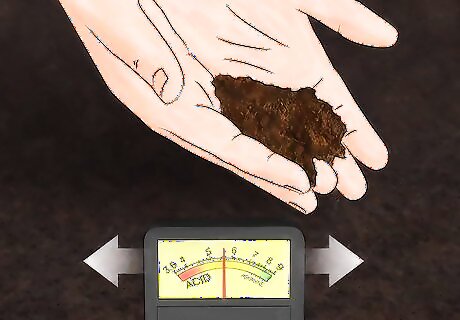
Amend the soil before planting your new lawn. Now that you’re starting from scratch, take advantage of your access to the soil of your lawn by preparing it for “hosting” grass seeds. Add organic matter, lime, sulfur or fertilizer to serve as amendments for the site of your new lawn. Don’t cultivate the soil it too finely. You’ll want to avoid the soil crusting into a hard surface which prevents seeds from emerging. Aim for soil that isn’t dense and will allow seeds to grow.
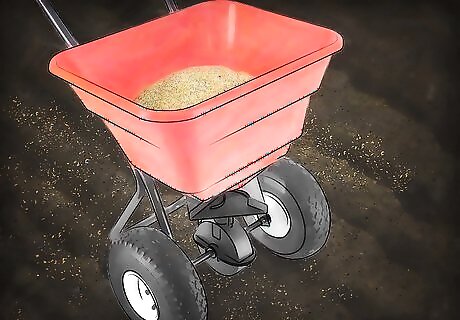
Seed your lawn. Lawns started from seed are best planted in the early fall or in the spring after frost season. Sow the seed evenly from a spreader, walking at a slow, steady pace and allowing a 6 inch to 1 foot (0.30 m) overlap of seeds. Work the seed gently into the ground afterward using an inverted plastic rake, and apply a thin topdressing of soil to ensure good soil contact and moisture retention. Select the seed that works best for your lawn environment. Your seed-seller can make a recommendation. Use a drop-spreader to distribute the seeds. The drop-spreader has a dropper with adjustable holes. Most lawn products will suggest what size hole you should use. The drop spreader is good for most lawns under 4,000 square feet. For lawns over 4,000 feet (1,000 m), use a broadcast spreader. They're faster and allow for a wider distribution of seeds. In tight corners or confined spaces, sprinkle seed by hand for best placement.
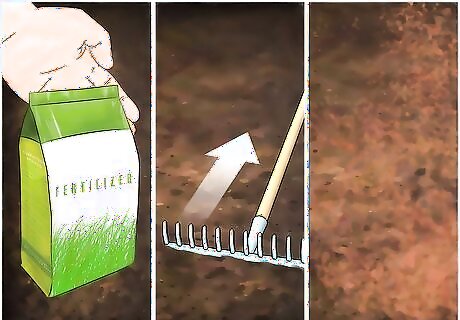
Apply a fertilizer. Your local lawn and garden supplier will help you to choose the fertilizer appropriate for your lawn. Cover the seeds with fertilizer using the back of your rake, then apply a thin layer of organic mulch if you expect hot, dry weather.
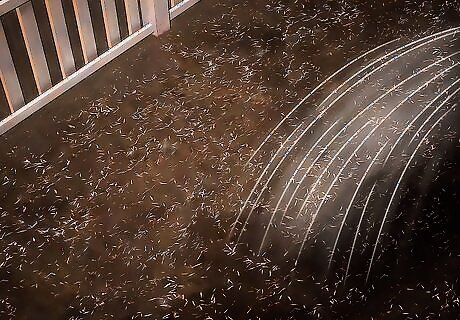
Water the newly seeded lawn thoroughly. Don't wash away the seeds. Keep the seeded area moist until the grass sprouts (about 3 weeks). Water for brief periods of time, but often. When the weather is warm, try for four or more times a day.
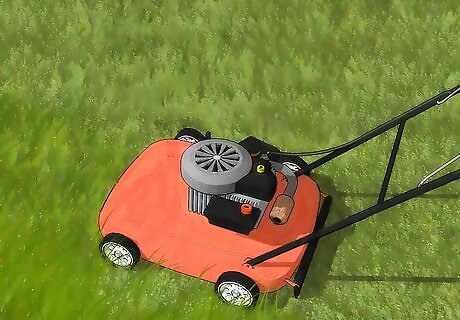
Mow your new lawn. Mow for the first time after the grass has grown a third taller than its optimum height. Use sharp, straight, undamaged mower blades and go slowly to avoid damaging the new roots. Mow in different directions each time for more even cut and growth.

Monitor your new lawn closely for the first 4-6 weeks. Avoid walking on the lawn or weeding it for the first 4-6 weeks. If weeds are still a problem in 6 weeks, remove them then. Spot spraying herbicide is more effective than hand pulling, but avoid multiple uses of the same herbicide. If applied too often, most broadleaf control products will kill the grass seedlings as well.
Starting Your New Lawn Using Sod
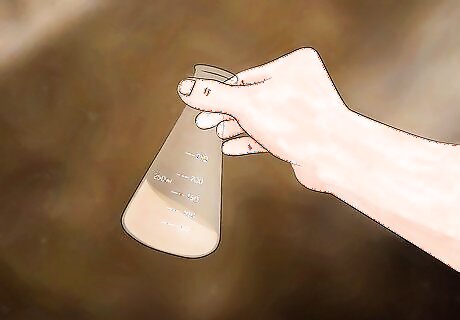
Test your soil. You'll need to confirm that the base of your lawn site will be a good fit for the sod you'll order. For about US$15.00 your local extension will send it to a lab for analysis.
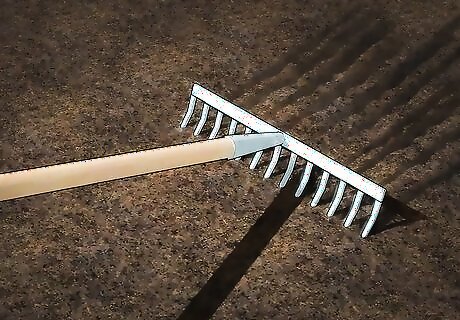
Grade the soil for your new lawn. You can fix existing problems by grading, as you prepare for sod to arrive: Avoid too much slope for your new lawn. The maximum slope is about twelve inches for every four feet. If your slope is greater than that you might need to build a retaining wall. Use a hose to water the site for your new lawn. Note areas where puddles have formed. Use a rake to fill in the low areas on your lawn with soil from the high spots. Be sure the finished grade is level with the areas surrounding your lawn site. If the soil test report suggests you need soil amendments, allow an additional 2 inches (5 cm) of depth to accommodate them.
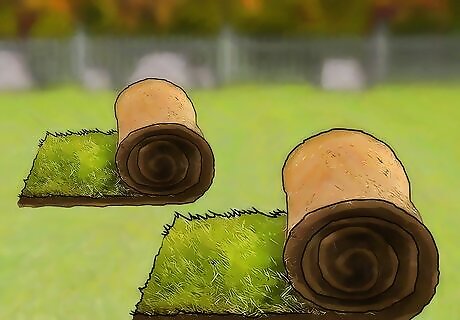
Buy your sod. This will generally be a mix of two to three turf grasses, ordered from a sod farm or a garden center. Let the supplier know your lawn's sun conditions before placing the order. Measure the square-footage of your lawn carefully so that you can order the right amount of sod. It’s best to go over a bit to cover cutting around curves . . . about 5% over should do the trick.
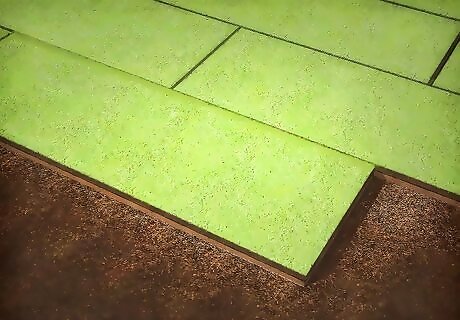
Lay the sod the same day it arrives. Two people could cover about a thousand square feet of sod in a day. If your yard is bigger, consider getting a little help from your friends to install the sod as quickly as possible. Lay the sod as follows: Lay your first strip in the longest straight section of your yard. Keep off the sod during installation. Pat down the sod so that it’s flat against the soil beneath it. Lay the next row of sod. Cut the sod in half first and lay it in a staggered design (as bricks are laid). Roll out each roll in the same direction. If rolled in different directions, your lawn will look uneven (at least at first), and the seams may be harder to lay with adjacent strips. Make sure the sections of sod are snug against each other, without overlapping. Continue this process for your whole lawn, cutting sections and staggering them as you lay them down. You can cut holes in the sod for ground sprinklers if you plan on using them. Use a knife to trim the sections of sod that abut paved areas.
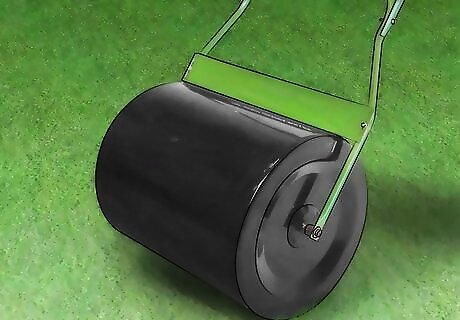
Roll out the lawn. Fill a lawn roller half full with water and walk over your lawn in various directions. This will press down the sod so its root base is firmly in contact with the soil, encouraging them to grow together.
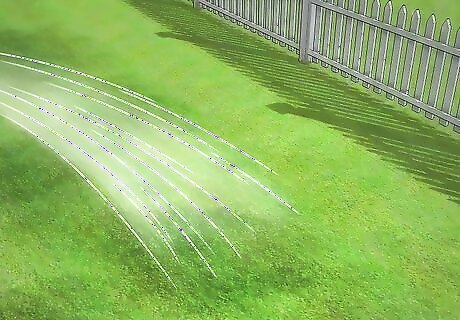
Water the newly sodded lawn frequently. Water just to the point of puddling, then stop. Depending on the weather, you may need to repeat this more than once a day to prevent the seeds from drying out. Avoid overwatering, which can prevent good soil contact and encourage fungal diseases if left damp overnight. Keep foot traffic on the sod to a minimum in the early stages.
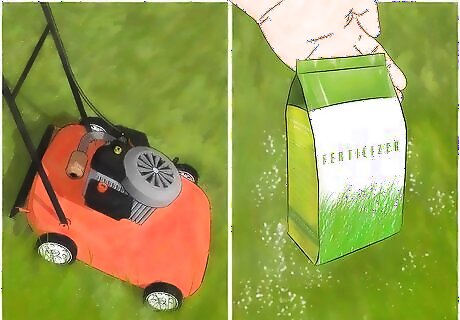
Mow and fertilize the lawn. When the grass reaches about 3 inches (8 cm) cut it down to 2 inches. The grass is still fragile, so use a regular lawnmower rather than heavier equipment. Grass in the heat of summer will fare better if allowed to grow taller and cut on the mower's highest setting. The taller growth helps retain moisture at ground level. After three to four weeks growth, add fertilizer to the lawn. This will replace nutrients lost to watering and wet weather.



















Comments
0 comment